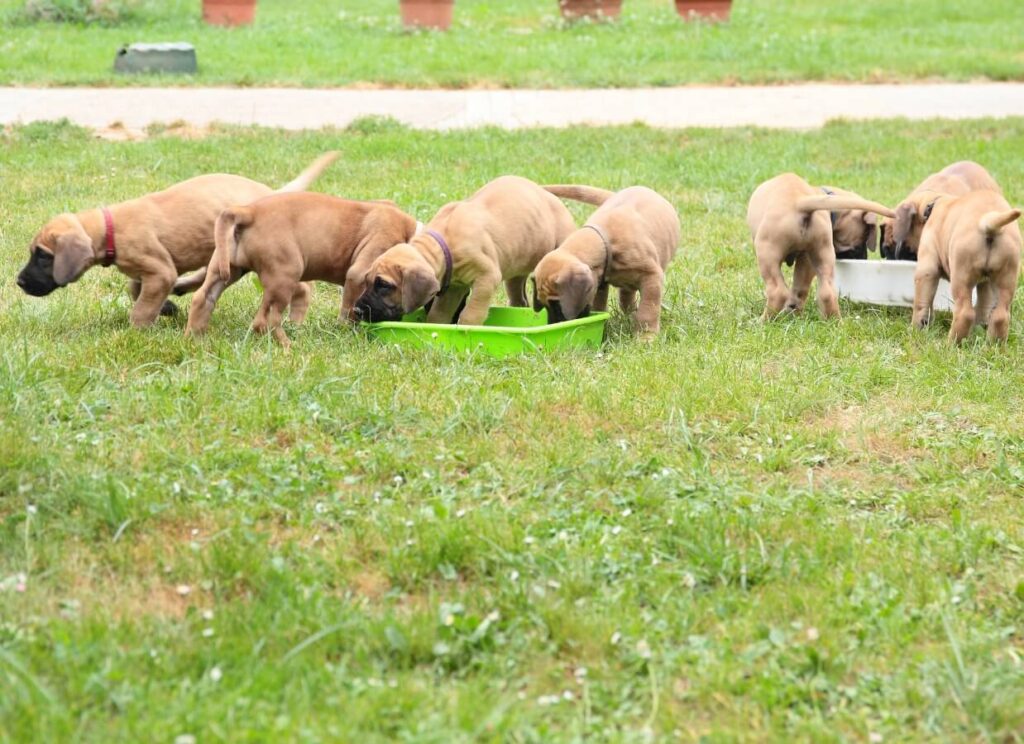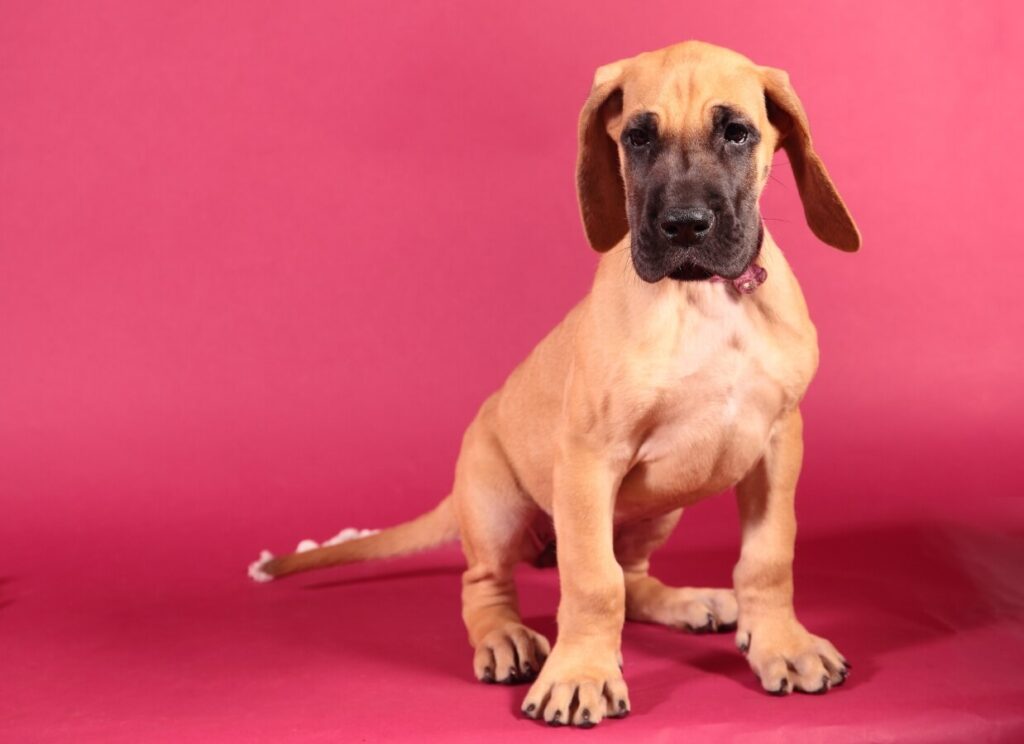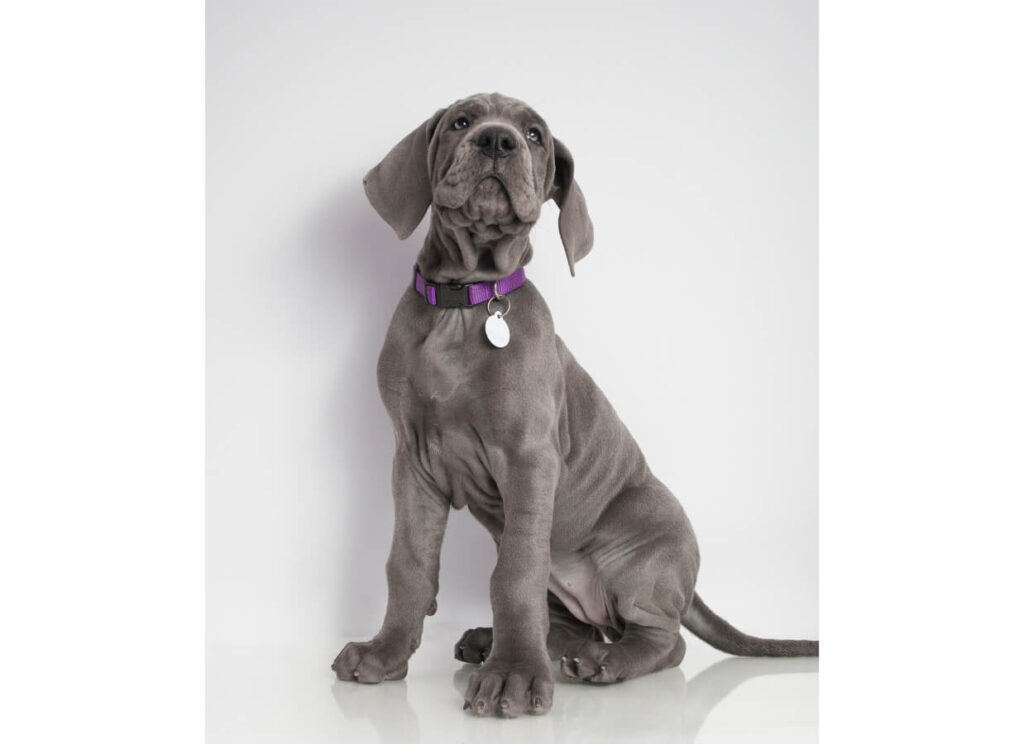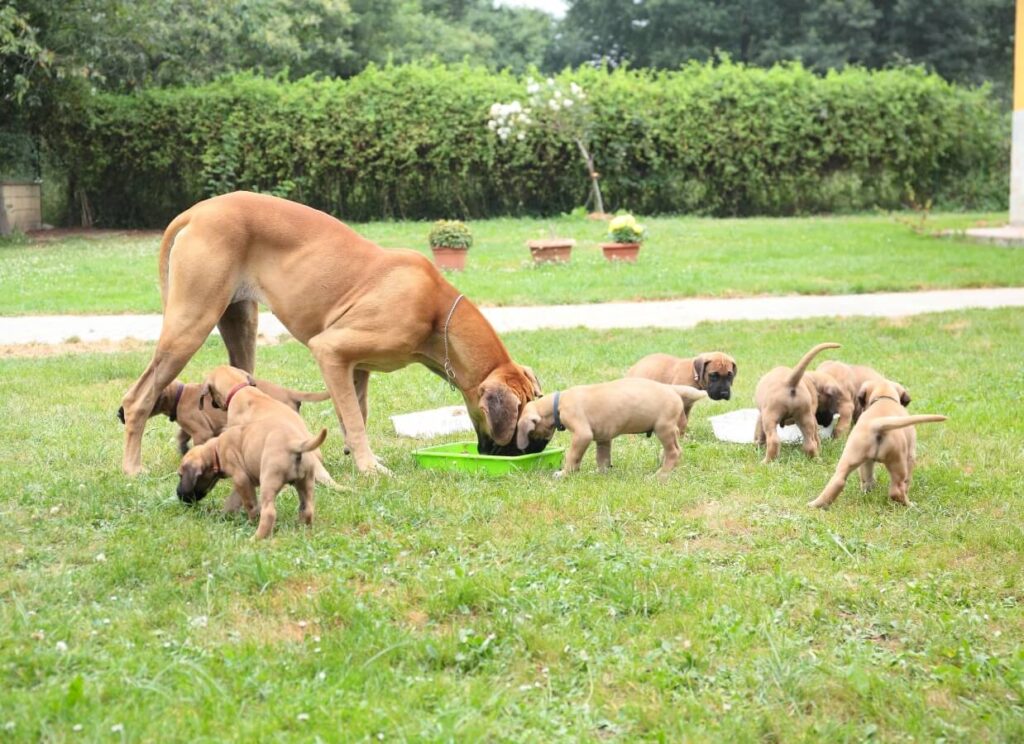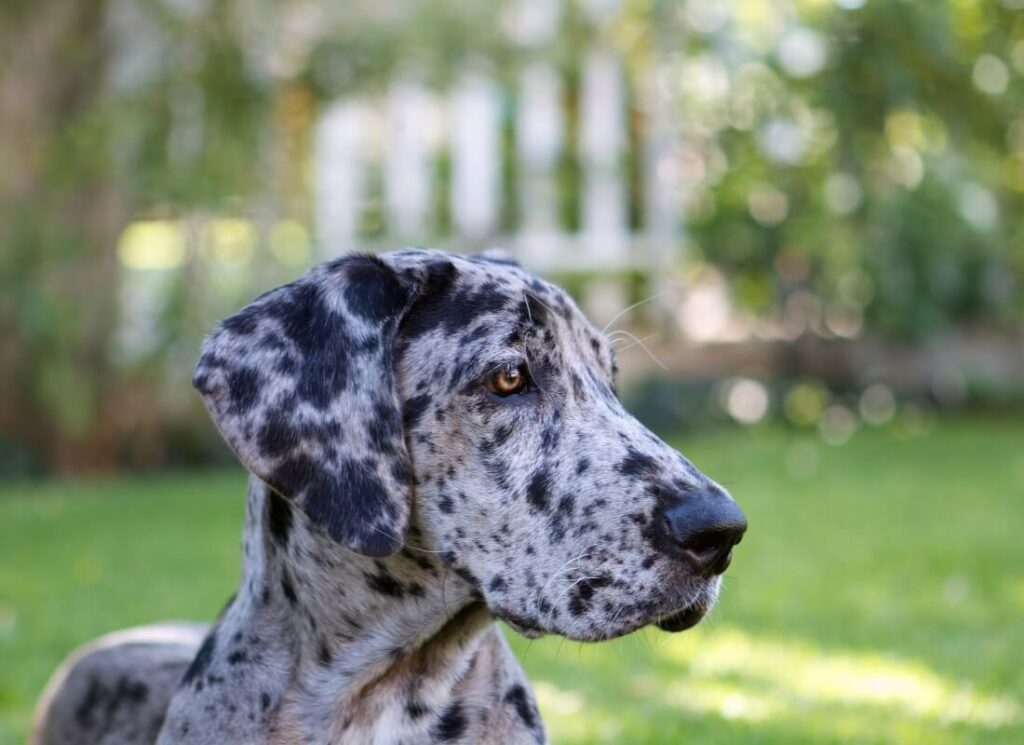Great Dane puppy socialization is NOT for the faint of heart… BUT…
Socialization is one the MOST important things that you can do with your Great Dane puppy!
This process begins with the breeder. An ethical breeder will have already exposed your puppy to a variety of sights, sounds, people, textures and obstacles. They will have also taught the puppies some early basics about collars, crates, cars, handling, sitting politely for a treat, coming back and peeing outdoors.
Unfortunately, not every breeder is that thorough, but it really does make a difference.
Make sure you choose breeders that are breeding dogs with good temperaments. Puppies that come from anxious, fearful or aggressive parents are more likely to have those behaviors as well, no matter how much you socialize them.
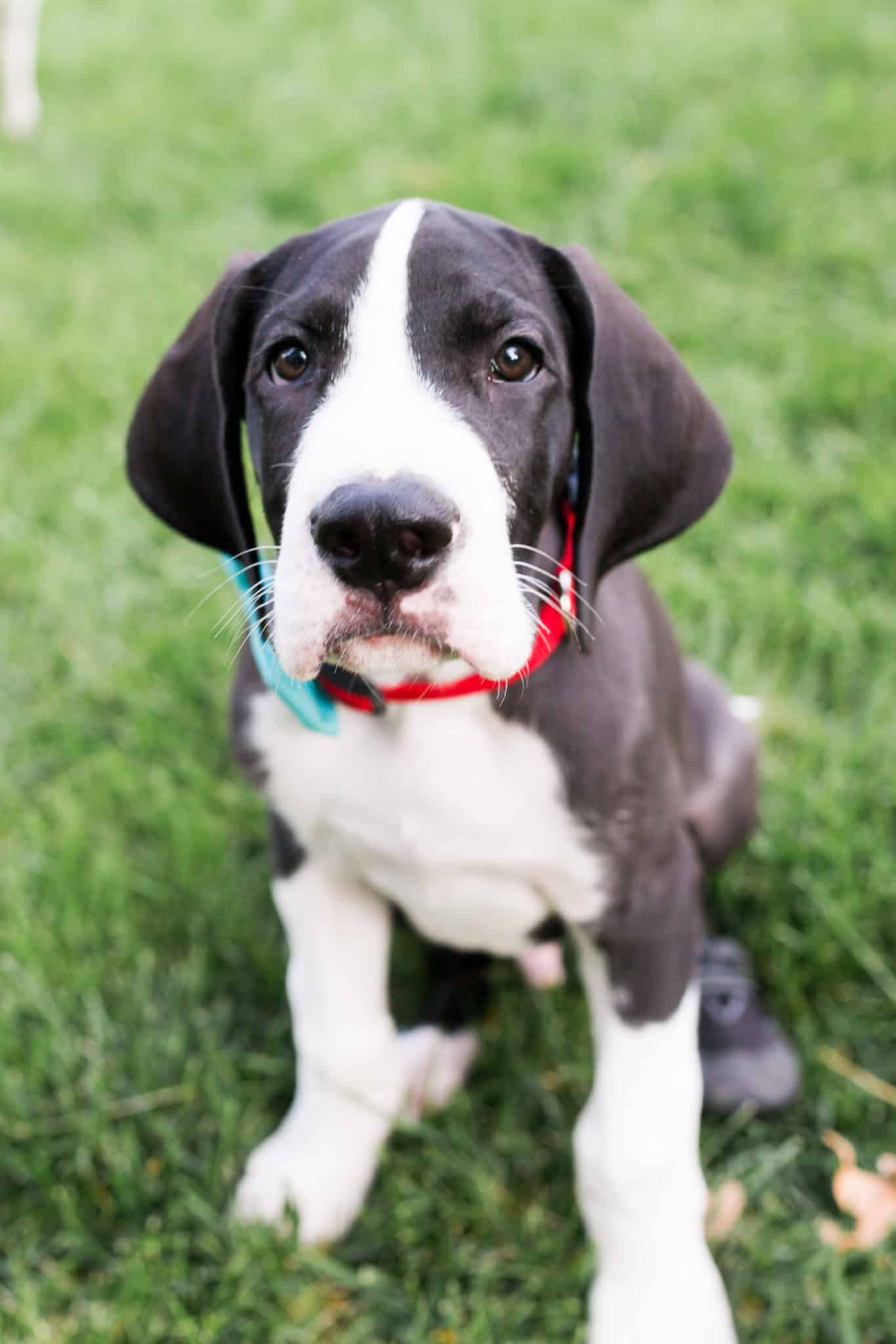
GREAT DANE PUPPY SOCIALIZATION IS NOT WHAT YOU THINK
Many people believe that socializing a puppy means taking him to a pet store or dog park and meeting lots of people and dogs.
The truth is, both of those places and situations are the exact kind of environment where a dog may actually learn to be afraid of dogs and people!
Dog parks and pet stores are for mature, confident dogs that are vaccinated and already engaged with you as the owner. Not under-vaccinated or terrified dogs that are still learning about the world and how to appropriately handle interactions with humans and dogs.
Now that I’ve made a mess of your beliefs about socialization, it’s time to chat about what socialization for Great Dane puppies actually looks like!
SOCIALIZATION is about positive exposure to novel things
The more positive, safe, calm and curious exposure your puppy has to novel things, the more likely it is that your puppy will be confident and able to handle new situations (including people, dogs, and travel).

OBSTACLES
Create a ‘puppy playground’ and change it every day. Make sure to include novel items and obstacles that require the puppy to climb up, over, under and around. Encourage the puppy to explore.
Well socialized dogs are calm, confident and gentle. They are much easier to train because they are less excited by or anxious about the environment, people, sounds and dogs!
How to Stop a Great Dane from Jumping Up
How to Teach a Great Dane to Walk on Leash
Is the Gentle Leader an Abusive Tool?

SOUND
Early desensitization to common sounds is important. Play these sounds and then praise and treat the puppy. Play them and act like it’s no big deal. Mix it up!
- Play the sound of thunder, babies, cars, gunshots and fireworks from your phone.
- Knock on the door.
- Have somebody ring the doorbell, randomly (ignore it every time!).
- Bang pots and pans together.
- Drop things on the floor.
- Run the vacuum, drill, dremel, & hairdryer.
If at any time your puppy seems scared (ears pinned, cowering, shaking, stop! This is meant to be fun.
Yes it’s important to keep puppies safe before they are fully vaccinated. But that’s no reason not to socialize them. There are MANY things that you can do before your puppy is truly ready to meet the world.

TOUCH
Because Great Danes are SO large, it is important that they are accepting of touch.
- Touch the puppies toenails with trimmers and a Dremel, treat and praise.
- Brush the puppy all over with crinkled up foil, a dog brush, or your hands.
- Do a pretend vet and judging exam. Look at teeth and ears and do a pretend shot using a ballpoint pen.
- Rub the puppies ears and pretend to clean them.
- Run your hand down your puppies back and to the tip of the tail.
- Gently pick each foot up and put it back down again.
- Brush the puppies teeth.
Do not use training methods that involve hitting, pinching, shoving, tapping or pinning/alpha rolls. These can seriously undermine the work you do to make your puppy trust you and trust your hands and the hands of a veterinarian or groomer.

TEXTURES
Textures are all things your dog may encounter in the world. Make a point to explore and touch all of these surfaces at minimum:
- Sand & gravel
- Grass
- Wood chips
- Concrete & asphalt
- Snow & Ice
- Puddles and wet spots
- Bridges
- Tile
- Hardwood
- Carpet
- Foam
- Foil/shiny objects
After all that, it’s still true that your puppy needs to be exposed to people and dogs. We encourage you to do this part thoughtfully. Exposure to rude people and rude dogs is not socialization.

WATCH
Sit on your lawn, near a bike path, or at a park. Be calm and just WATCH.
- Children playing
- Strollers
- Wheelchairs and walkers
- Bicycles & Scooters
- Large dogs
- Small dogs
- Barking dogs
- Wildlife
- People of all kinds
Reward your puppy for looking at you and ignoring these things. Ultimately, that is what you want from your dog as an adult! Calm confidence.
Of course, greeting people (calmly) and dogs (safely) is also important! Consider taking a puppy preschool class in a clean facility where early social skills are reinforced.
When meeting people, there is no reason to reward a jumping, excited, peeing or nervous puppy with attention from people that are squealing with excitement to meet him! That scenario is the fast track towards creating a 120lb adolescent Great Dane that either jumps and tackles people with enthusiasm, or is unfortunately afraid of them.
Know body language. If at any time your puppy is scared (ears pinned, stiff, avoidance, hiding, shaking, panting, tail tucked, lip licking) these are signs that you are moving too fast.

EARLY TRAINING
Every experiences that your puppy has a young age (good or bad) can shape the future.
If you take a puppy that has had very little exposure to early training basics (sit, look, leave it) into a store you may accidentally be having your puppy practice the WRONG behavior in those situations.
Puppy Training: 5 Mistakes in Training
People will be so excited, and your puppy may either be fearful (bad socialization experience) or too excited (that’s not pretty when they weigh 140lbs!).
Focus on training inside of stores! They are a great place to practice ignoring people and dogs.
Be choosy! One bad experience with a rude, out of control dog or a pesky child can ruin a puppy for life. It’s much better for a puppy to learn to ignore and walk away from those two scenarios than it is for them to learn to ‘tolerate’ it.



